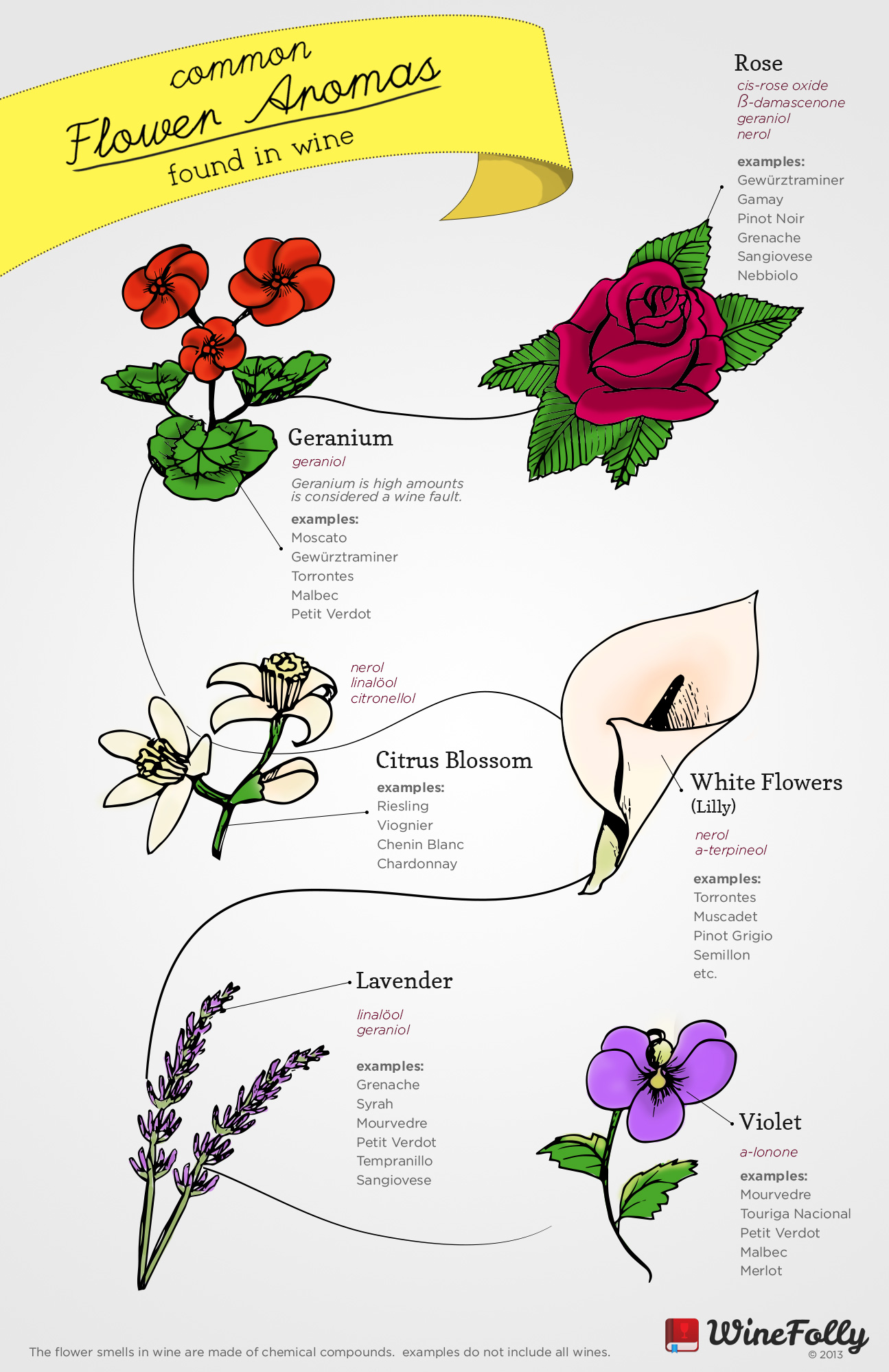Also known as: Jaen
Table of Contents
Primary Flavors
- Tart Cherry
- Violet
- Anise
- Blackberry
- Crushed Gravel
Taste Profile
Mencía, a native of Spain and Portugal, captivates with its deep violet hues and aromatic intensity, reflecting its high anthocyanin content and terpenoid composition. If you like Pinot Noir, you’ll probably love Mencía.
On the nose, Mencía releases a floral bouquet intertwined with strawberry, raspberry, black licorice, cherry sauce, and a hint of pomegranate. The aroma showcases its unique terpenoid subgroup, painting an evocative sensory picture.
On the palate, Mencía surprises with a peppery burst, balanced by tart notes of sour cherry and red currant with high levels of acid. Tannins range from smooth and moderate to light yet grippy. Depending on its region of origin, a mineral-like texture may be present, enhancing its peppery character.
How to Serve Mencía Wine
Serve Mencía at just below cellar temperature, between 55-60°F (12-15°C), to best express its delicate aromatic profile. A universal wine glass works best, as it promotes aeration and magnifies the bouquet. Decant Mencía wines for an hour before serving, allowing the wine to fully unfold.
Over time, in bottle, Mencía evolves to savory and earthy notes. Most bottles mature elegantly over 3-7 years, while exceptional examples can continue to develop for up to a decade or more.

SERVE
55-60°F / 12-15°C
GLASS TYPE
Universal
DECANT
1 Hour
CELLAR
10+ Years
Mencía Food Pairing
Mencía’s versatile nature harmonizes with a range of dishes. Its floral bouquet and tart fruitiness shine with lean meats, charcuterie, and rich, savory stews. A fine partner for cured cheeses, its peppery notes also enhance earthy mushrooms, hearty beans, or steak au poivre.
With age, it becomes a robust companion for game meats. Its subtly mineral undercurrent makes it a compelling pairing for seafood paella, revealing the depth of Spanish and Portuguese cuisine.

5 Fun Facts About Mencía
- Mencía’s parents are Alfrocheiro and Patorra, both from Portugal.
- Mencía is often mistaken for Cabernet Franc due to their aromatic similarities.
- The mineral undertone in Mencía is often attributed to the slate and granite soil it grows in.
- Mencía was once known primarily for young, fruity wines but now shines in aged, complex expressions.
- Mencía ripens early, usually mid to late September, making it less vulnerable to autumn rains.

Where it Grows
Originating from northwest Spain, Mencía thrives in regions like Bierzo, Ribeira Sacra, and Valdeorras. It’s also cultivated in Portugal’s Dão region as Jaen. The grape’s natural acidity and delicate aromas are preserved in these cool, high-altitude climates, with diverse slate to granite soils contributing to its complex, high-quality wines. Despite global interest, Mencía’s most acclaimed expressions are deeply rooted in its native Iberian Peninsula.
- Spain: 20,977 acres (8,489 hectares)
- Portugal: 6,328 acres (2,561 hectares)
Total Vineyard Area – 27,310 acres (11,052 hectares) (data from 2021)

Spain
What to expect: Spain, with its cooler, high-altitude vineyards, provides the ideal conditions for Mencía’s delicate aroma and natural acidity to flourish. Expect Spanish Mencía to be medium-bodied and aromatic, showcasing ripe red fruit flavors, mineral notes, and often, a distinct peppery spice. The wine’s character can vary significantly between regions, with the most prestigious hailing from Bierzo and Valdeorras.
Bierzo: Nestled in the mountainous landscapes of northwest Spain, Bierzo Mencía wines often display a unique depth and complexity. Expect a tantalizing array of ripe red fruit flavors, floral notes, earthy undertones, and an intriguing minerality. Many Bierzo Mencías are aged in oak, adding a touch of smoky spice.
Valdeorras: Valdeorras produces Mencía that offer a different but equally captivating expression. Valdeorras’ Mencía typically presents bright, fresh red fruit flavors, coupled with floral hints, and underlined by a distinct minerality from the region’s predominance of granite soils. These wines are lighter and more fragrant, offering a fascinating counterpoint to the bolder expressions of Bierzo.

Portugal
What to expect: Mencía, or Jaen in Portugal, is primarily cultivated in the Dão region. Typically, Portuguese Jaen is lighter in body, exhibiting red fruit flavors, floral notes, and a spicy nuance. Its refreshing acidity allows versatility in food pairing.
Dão: Dão’s unique continental climate, protected by surrounding mountains, greatly influences its Jaen. The temperate conditions enable the grapes to ripen slowly and fully, resulting in well-balanced wines celebrated for their finesse. Dão’s Jaen offers a delicate interplay of strawberry and cherry flavors, floral undertones, firm tannins, and a refreshing minerality. These wines, often with promising aging potential, underscore Dão’s distinctive terroir.

In-Depth Knowledge
Take a deep dive into understanding Mencía.
Terpene-tastic
Mencía is notable for its high terpene content. Terpenes, natural compounds in grapes, are critical in defining a wine’s aroma. In Mencía, terpenes like geraniol, linalool, and nerol are often abundant, contributing rose-like, sweet floral, and citrus aromas, respectively, giving Mencía its distinctive aromatic complexity.
These terpenes interact with other compounds, such as anthocyanins and tannins, creating the nuanced flavor and texture of Mencía. The balance of moderate tannin levels with vibrant acidity, possibly due to a higher malic acid concentration pre-fermentation, can yield wines from light and elegant to full and structured, depending on vinification.
Vineyard environment, viticultural practices, and yeast choice for fermentation can also impact these compounds’ expression. Specific yeast strains may enhance Mencía’s terpene profile during fermentation, explaining the variability in aromatic intensity across wines made from the grape. Thus, Mencía’s high terpene content and the influence of terroir and winemaking practices shape the wine’s enticing aromatics, diverse flavor profiles, and versatility.